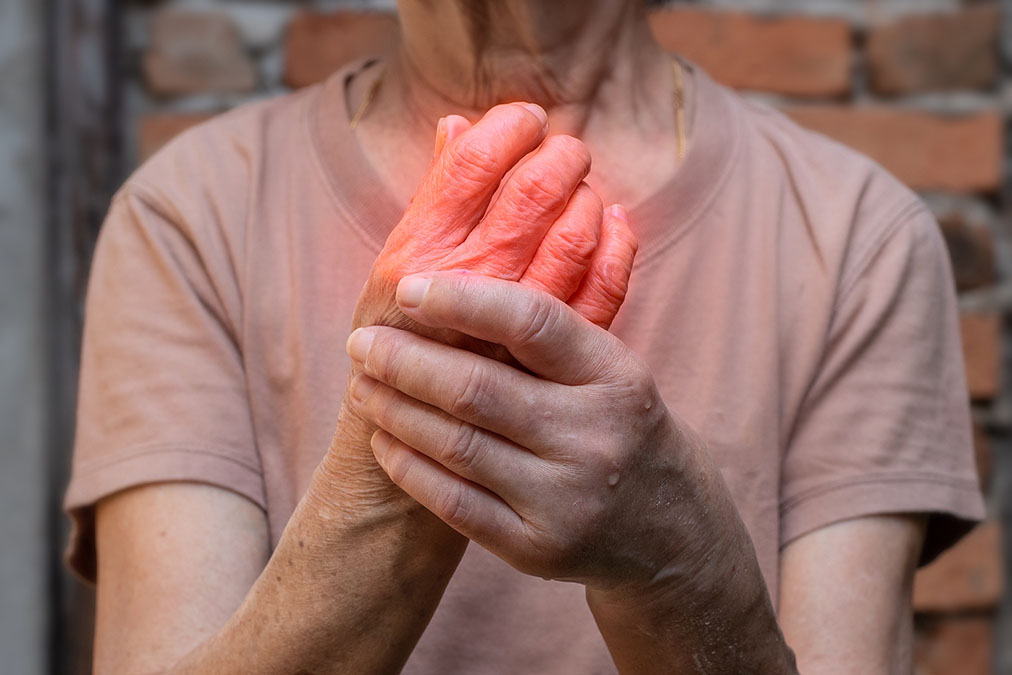 Exercising is one of the most effective ways to improve arthritis.
Exercising is one of the most effective ways to improve arthritis.
This is annoying in a way because it’s often uncomfortable, but it’s been proven to improve arthritis.
That’s why a new study in the Annals of Internal Medicine wanted to determine the absolute minimum amount of exercise required to improve arthritis.
A research team led by a physiotherapist at Karolinska Institute in Stockholm enrolled 189 patients with diagnosed knee osteoarthritis, which is the wear-and-tear version of the disease, from primary healthcare facilities in Norway and Sweden. All the participants experienced pain and reduced knee function.
The researchers asked all of them to perform certain exercises, including indoor cycling, knee extensions, and de-loaded squats in which pulleys were used to take some of the weight off the knees.
They divided the participants into two groups: a high-dose group that performed 11 exercises in sessions of 70 to 90 minutes and a low-dose group that performed five exercises in sessions of 20 to 30 minutes.
They gave the patients the standard Knee Injury and Osteoarthritis Outcome Score test to complete several times during the study period and again six and 12 months later. They also asked them to complete questionnaires measuring pain intensity and quality of life.
They established the following:
-
1. Both groups improved on the Knee Injury and Osteoarthritis Outcome Score survey at three, six, and 12 months, with little difference between the groups.
2. The quality of life of both groups improved, with a very slight advantage for people in the high-dose group.
This means that high-dose exercise is not really more beneficial than low-dose exercise.
This is good news because it means that you can adjust your exercise program to your own goals and needs and still experience reduced pain and better function in your arthritic joints.

 Overcoming IBD
Overcoming IBD Multiple Sclerosis
Multiple Sclerosis Banishing Bronchitis
Banishing Bronchitis Gum Disease Gone
Gum Disease Gone Overcoming Onychomycosis
Overcoming Onychomycosis Neuropathy No More
Neuropathy No More The Prostate Protocol
The Prostate Protocol Brain Booster
Brain Booster
 Ironbound
Ironbound
 Solution for Shingles
Solution for Shingles
 The Bone Density Solution
The Bone Density Solution
 The Ultimate Healing Protocol
The Ultimate Healing Protocol
 The Parkinson's Protocol
The Parkinson's Protocol
 The Chronic Kidney Disease Solution
The Chronic Kidney Disease Solution
 Overthrowing Anxiety
Overthrowing Anxiety The Fatty Liver Solution
The Fatty Liver Solution The Hypothyroidism Solution
The Hypothyroidism Solution
 The End of Gout
The End of Gout The Blood Pressure Program
The Blood Pressure Program
 The Oxigized Cholesterol Strategy
The Oxigized Cholesterol Strategy
 Stop Snoring And Sleep Apnea Program
Stop Snoring And Sleep Apnea Program
 The Arthritis Strategy
The Arthritis Strategy The Vertigo & Dizziness Program
The Vertigo & Dizziness Program The 3-Step Diabetes Strategy
The 3-Step Diabetes Strategy Hemorrhoids Healing Protocol
Hemorrhoids Healing Protocol The Erectile Dysfunction Master
The Erectile Dysfunction Master Weight Loss Breeze
Weight Loss Breeze The IBS Program
The IBS Program The Insomnia Program
The Insomnia Program The Migraine and Headache Program
The Migraine and Headache Program The Neck Pain Solution
The Neck Pain Solution The Menopause Solution
The Menopause Solution The Ejaculation Master
The Ejaculation Master The TMJ Solution
The TMJ Solution The Acid Reflux Solution
The Acid Reflux Solution The Fibromyalgia Solution
The Fibromyalgia Solution The Psoriasis Strategy
The Psoriasis Strategy